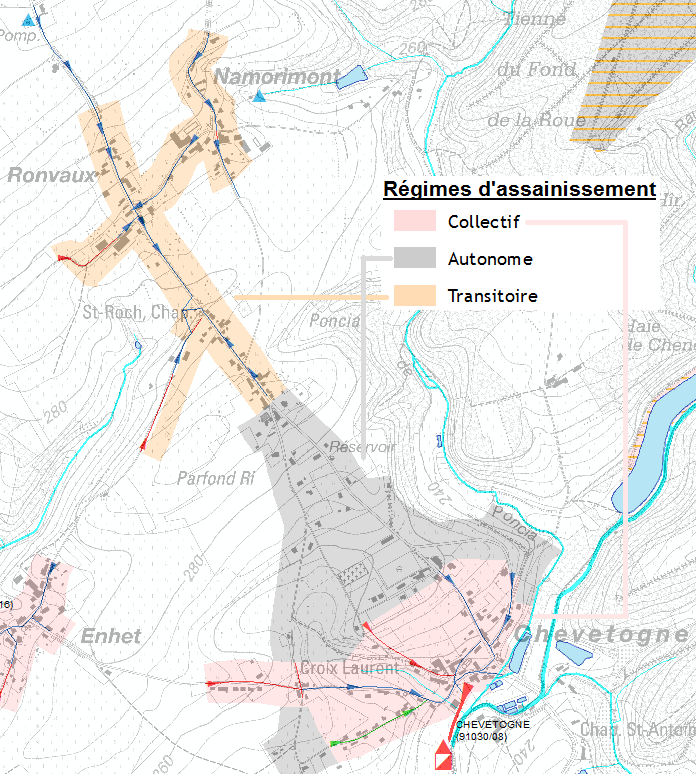Water is essential for our life on earth. It is a part of our daily life. The water coming from the drinking water supply network is both drunk (least part of the supply) and used for various purposes (greatest part: flush water, washing water, cooking water, etc.). In both cases, the characteristics of the water returning to the sewerage do not match its state at the exit from the tap. The same applies to the artificial water run-off resulting from rainfall.
All the different uses of water are responsible for a degradation of the water quality, meaning that polluting elements appear. Those elements prevent the disposal of wastewater in the environment without a prior treatment that hugely reduces the impact on the ecosystem.
That is precisely the point of sanitation, whose goal is to carry out the optimal treatment of wastewater generated by each habitation on the Walloon territory.
Depending on certain features (technical, historical, financial, etc.), three types of sanitation regimes exist in the Walloon Region. Each corresponds with particular obligations:
The community sanitation regime: any building subject to this community regime is obliged to join the existing sanitation network (sewerage). The flowing wastewater goes to a community treatment plant.
The autonomous sanitation regime: it works overall where the community system cannot be set up (natural constraints, technical, environmental, financial, etc.). Buildings subject to this regime must gradually be equipped with an individual treatment system (S.E.I., système d'épuration individuelle) that provides an individual treatment in situ of the wastewater created.
The transitory sanitation regime: this type of regime, which is about to disappear in Wallonia, concerns the buildings located in an area where no definitive regime has been chosen. Those buildings are therefore subject to special obligations.
These three regimes, which correspond with delimited geographical areas, were mapped in specific plans: the sanitation plans per river sub-basin (PASH, plans d'assainissement par sous-bassin hydrographique). They were all approved by the Walloon Government (date of adoption of the different PASH). As an example, the three types of regime are presented on the map below (pink: community; grey: autonomous; orange: transitory).
As for the responsibilities tied with the community sanitation, municipalities have to build sewerage in agglomerations treated with a community sanitation regime. In order to help them with it, the SPGE funds the draining work provided that the municipalities respect the terms of the draining contract. The authorized sanitation organisations (OAA), which the SPGE works with, are entrusted with the supervision of the work.
As regards the autonomous sanitation, the concerned owner must comply with the legal provisions in that matter.
